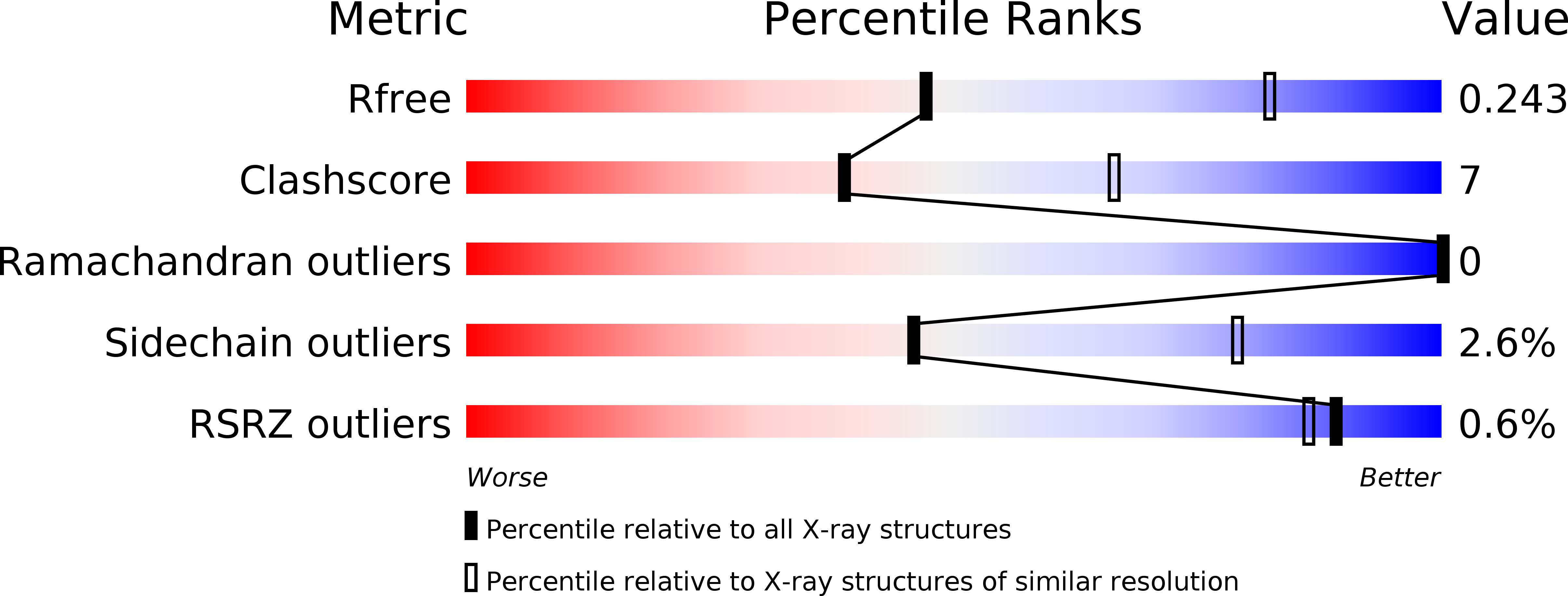The crystal structure of the regulatory domain of the human sodium-driven chloride/bicarbonate exchanger.
Alvadia, C.M., Sommer, T., Bjerregaard-Andersen, K., Damkier, H.H., Montrasio, M., Aalkjaer, C., Morth, J.P.(2017) Sci Rep 7: 12131-12131
- PubMed: 28935959
- DOI: https://doi.org/10.1038/s41598-017-12409-0
- Primary Citation of Related Structures:
5JHO - PubMed Abstract:
The sodium-driven chloride/bicarbonate exchanger (NDCBE) is essential for maintaining homeostatic pH in neurons. The crystal structure at 2.8 Å resolution of the regulatory N-terminal domain of human NDCBE represents the first crystal structure of an electroneutral sodium-bicarbonate cotransporter. The crystal structure forms an equivalent dimeric interface as observed for the cytoplasmic domain of Band 3, and thus establishes that the consensus motif VTVLP is the key minimal dimerization motif. The VTVLP motif is highly conserved and likely to be the physiologically relevant interface for all other members of the SLC4 family. A novel conserved Zn 2+ -binding motif present in the N-terminal domain of NDCBE is identified and characterized in vitro. Cellular studies confirm the Zn 2+ dependent transport of two electroneutral bicarbonate transporters, NCBE and NBCn1. The Zn 2+ site is mapped to a cluster of histidines close to the conserved ETARWLKFEE motif and likely plays a role in the regulation of this important motif. The combined structural and bioinformatics analysis provides a model that predicts with additional confidence the physiologically relevant interface between the cytoplasmic domain and the transmembrane domain.
Organizational Affiliation:
Norwegian Centre for Molecular Medicine, Nordic EMBL Partnership University of Oslo, Gaustadalléen 21, 0349, Oslo, Norway.














